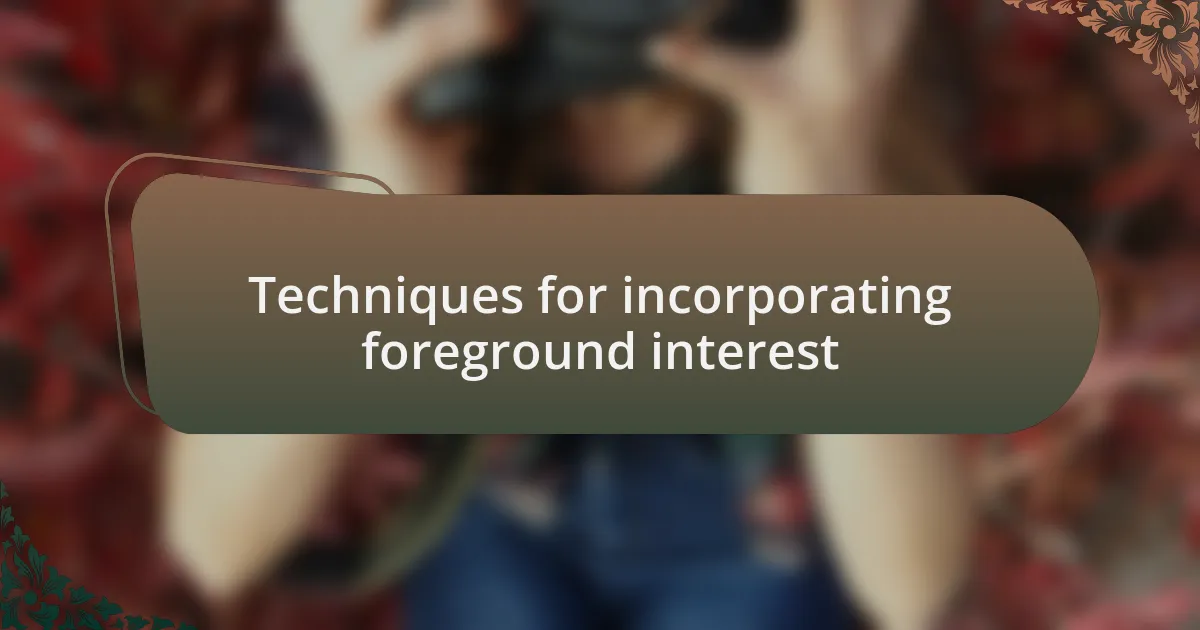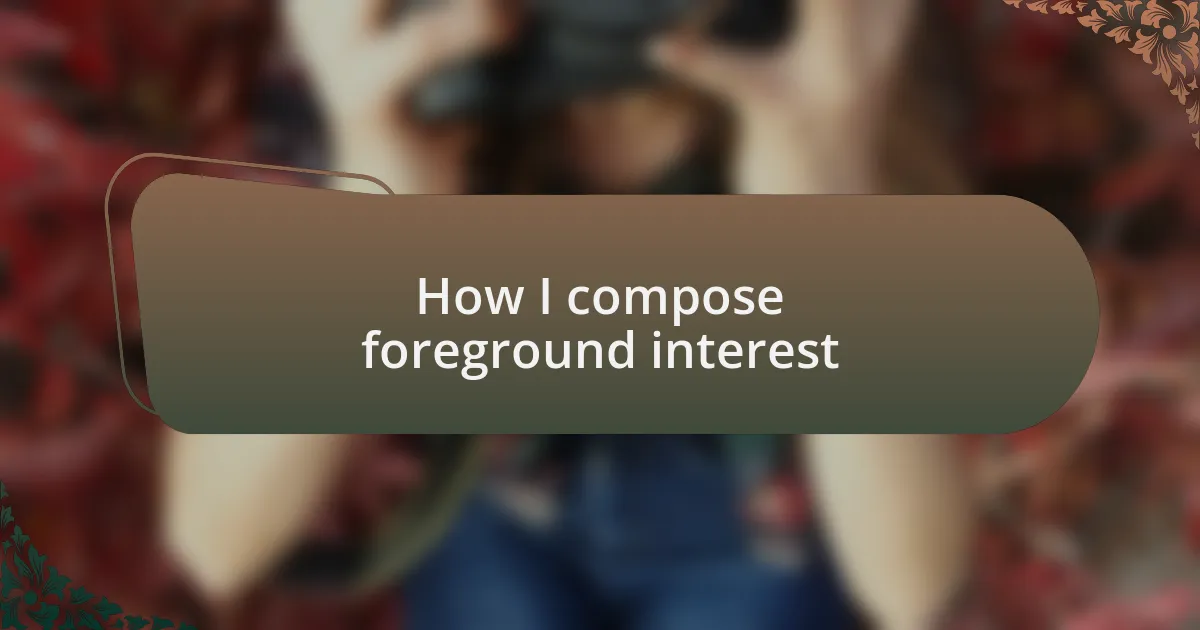Key takeaways:
- Foreground interest in photography enhances image depth and engages viewers by incorporating elements in the front of the frame.
- Techniques such as experimenting with angles, using leading lines, and effective color pairing are essential for creating impactful foreground interest.
- Textures, human elements, and everyday objects can significantly enrich the composition and narrative of a photograph.

Understanding foreground interest in photography
Foreground interest in photography is all about capturing elements in the front of the frame that draw the viewer’s eye and add depth to the image. When I first experimented with this technique, I discovered just how much context a simple rock or a flower in the foreground could bring to a landscape shot. Suddenly, the scene came alive, creating layers that invited the viewer into the photograph rather than just presenting a flat image.
Have you ever noticed how some photos simply resonate more than others? For me, it’s often the inclusion of a foreground element that adds that “wow” factor. I remember a moment while photographing a sunset over the ocean; I placed a weathered piece of driftwood in the forefront. The rugged texture and shadows contrasted beautifully with the vibrant colors of the sky, creating a story within the image that made it unforgettable.
Using foreground interest also challenges us to think critically about composition. I often ask myself, what draws my attention in this space? By considering this, I’ve learned to creatively incorporate everyday objects, like a path or an interesting leaf, to lead the viewer’s eye toward the main subject. This technique doesn’t just enhance the photograph; it transforms the entire viewing experience, making one feel as if they could step right into the scene.

Techniques for incorporating foreground interest
One effective technique I’ve found is to experiment with angles. When I shot a dense forest scene, I crouched low to the ground, capturing moss-covered stones at the forefront. This not only created a unique perspective but also emphasized the towering trees in the background. Have you ever considered how changing your viewpoint could completely alter the narrative of your photo?
Another approach I really enjoy is using lines in the foreground to draw the viewer’s eye. For instance, while photographing a winding river, I positioned some reeds in the lower part of the frame. The curves created by the reeds gently guided the eye toward the water, enhancing the overall flow of the composition. It made me realize how powerful leading lines can be in establishing a connection with the viewer.
I also encourage pairing colors effectively to strengthen foreground interest. A vivid flower in front of a muted landscape can create not just contrast but also emotion. I recall a time when I captured a bright red poppy against a soft green pasture. It was almost as if the flower was alive, drawing the viewer into a feeling of warmth and vibrancy that lingered long after the shutter clicked. How can you use color to evoke personal feelings in your own photography?

How I compose foreground interest
When I’m composing foreground interest, I often look for textures that add tactile quality to my images. I remember a moment when I photographed a windswept field, and the rough grass in the foreground caught my eye. By focusing on the blades, I was able to create a sense of depth, making the viewer almost feel the wind through the grass as they gazed at the scene. How does texture influence the way you experience a photograph?
Another technique I use regularly is incorporating human elements into the foreground. For instance, during a recent landscape shoot, I asked a friend to stand on a rocky outcrop. Their silhouette against the stunning sunset served as a focal point, pulling the viewer into the grand scale of nature behind them. This approach often provokes questions in the viewer’s mind: Who is this person? What are they feeling in this beautiful moment?
I find that using everyday objects can also enhance foreground interest effectively. While walking through a vibrant market, I picked up an antique camera and placed it deliberately in front of a bustling scene. The old camera not only introduced an interesting contrast against the lively backdrop but also told a story of nostalgia, making the viewer pause to appreciate both the object and the environment. Have you ever thought about how objects can bring a narrative to life in your own photos?